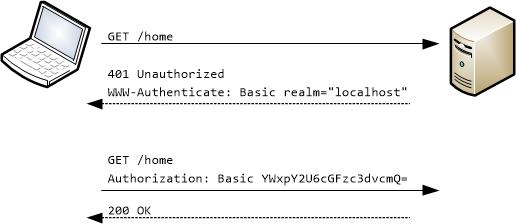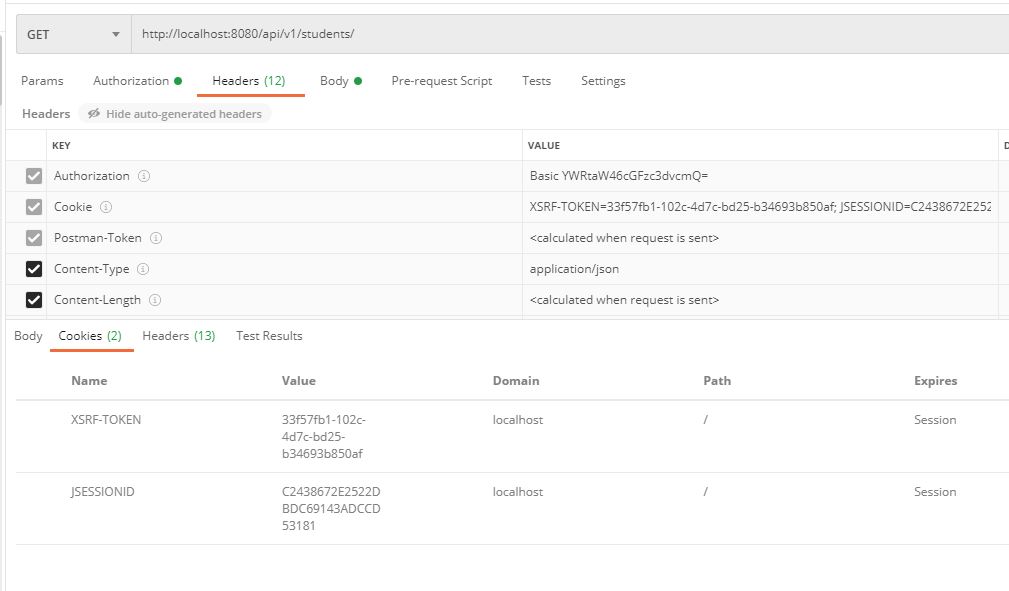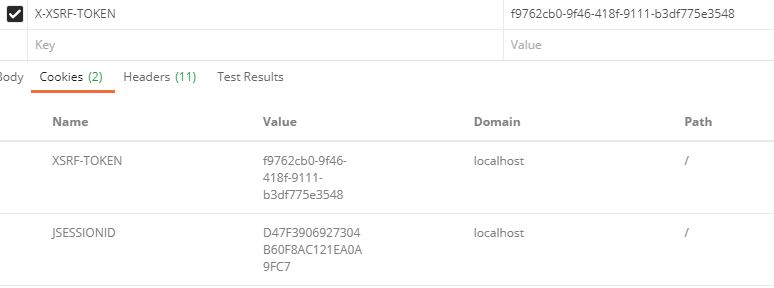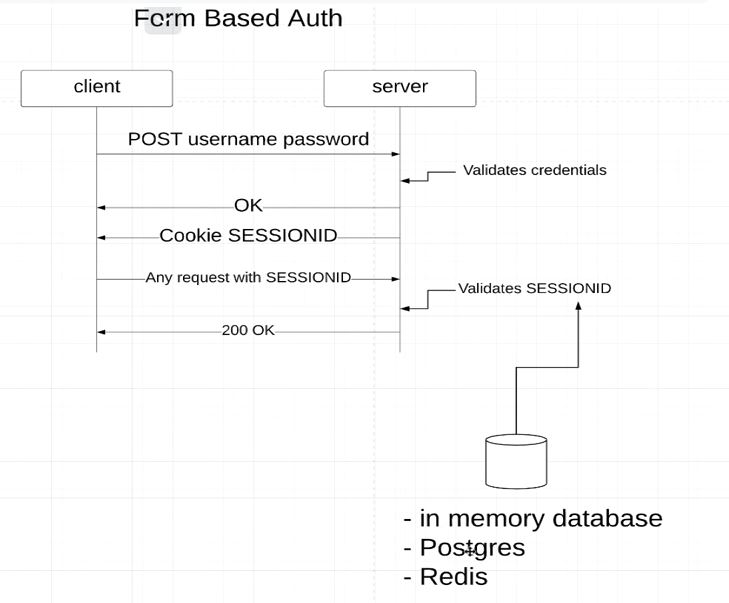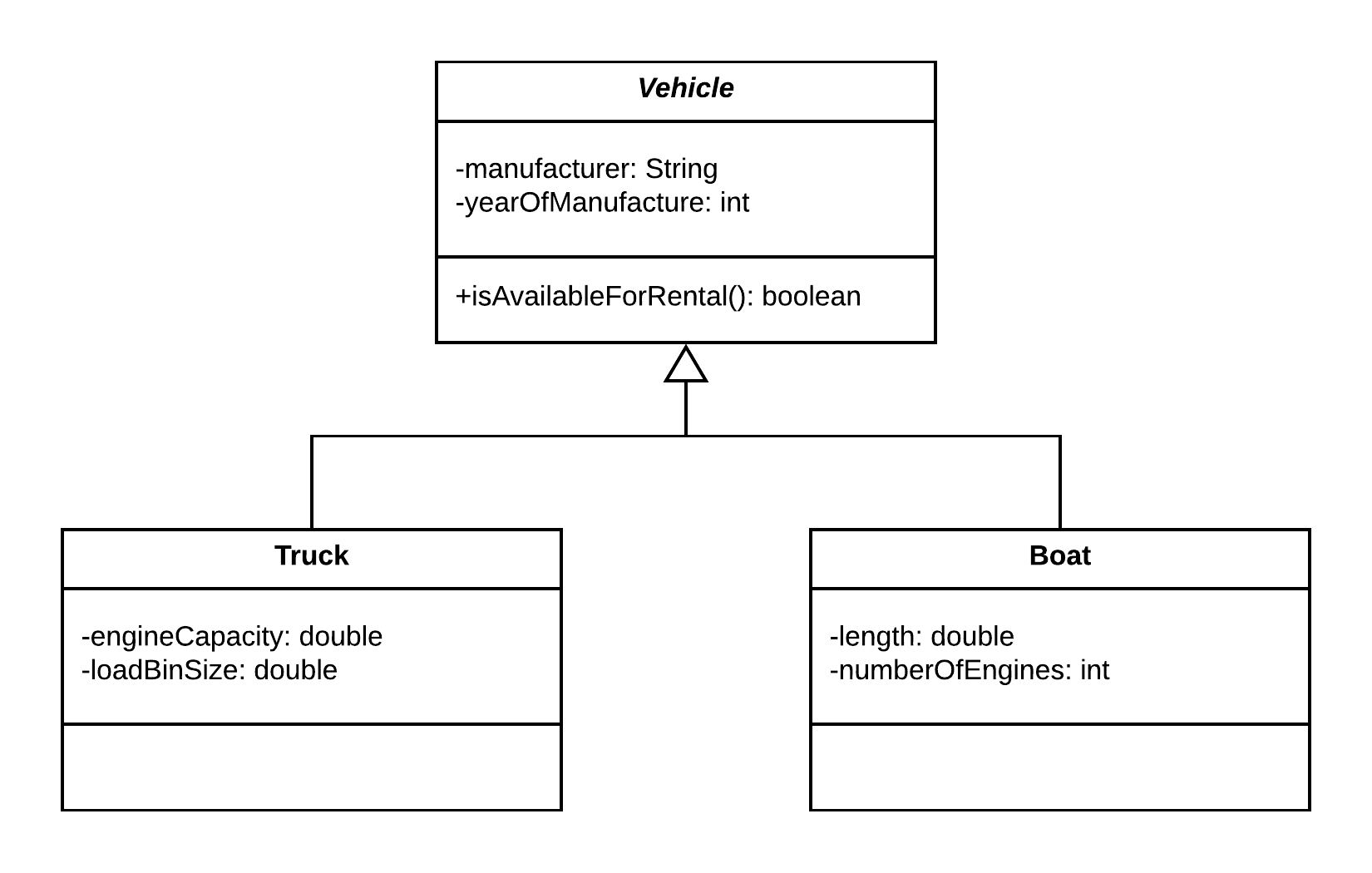ApplicationSecurityConfig.java
@Configuration
@EnableWebSecurity
public class ApplicationSecurityConfig extends WebSecurityConfigurerAdapter {
@Override
protected void configure(HttpSecurity httpSecurity) throws Exception{
httpSecurity.authorizeRequests()
.anyRequest()
.authenticated()
.and()
.httpBasic();
}
}
@Configuration
@EnableWebSecurity
public class ApplicationSecurityConfig extends WebSecurityConfigurerAdapter {
@Override
protected void configure(HttpSecurity httpSecurity) throws Exception{
httpSecurity.authorizeRequests()
//Whitelisting URLS
.antMatchers("/", "index", "/css/*", "/js/*").permitAll()
.anyRequest()
.authenticated()
.and()
.httpBasic();
}
}
Authentication with password with no encryption
@Override
@Bean
protected UserDetailsService userDetailsService() {
UserDetails mugilUsrBuilder = User.builder()
.username("Mugil")
.password("{noop}password")
.roles("ADMIN")
.build();
return new InMemoryUserDetailsManager(mugilUsrBuilder);
}
If {noop} is not used in password Spring security would throw an error asking to encode the password with password encoder as below.
java.lang.IllegalArgumentException: There is no PasswordEncoder mapped for the id “null”
PasswordConfig.java
@Configuration
public class PasswordConfig {
@Bean
public PasswordEncoder passwordEncoder()
{
return new BCryptPasswordEncoder(10);
}
}
ApplicationSecurityConfig.java
- Inject the passwordEncoder from PasswordConfig class to ApplicationSecurityConfig
- Encode the password using instance of injected encoder in ApplicationSecurityConfig
@Autowired
private PasswordEncoder passwordEncoder;
@Autowired
public ApplicationSecurityConfig(PasswordEncoder passwordEncoder) {
this.passwordEncoder = passwordEncoder;
}
@Override
@Bean
protected UserDetailsService userDetailsService() {
UserDetails mugilUsrBuilder = User.builder()
.username("Mugil")
.password(this.passwordEncoder.encode("password"))
.roles("ADMIN")
.build();
return new InMemoryUserDetailsManager(mugilUsrBuilder);
}
ApplicationSecurityConfig.java
@Configuration
@EnableWebSecurity
public class ApplicationSecurityConfig extends WebSecurityConfigurerAdapter {
.
.
@Override
@Bean
//Authentication
protected UserDetailsService userDetailsService() {
UserDetails adminUsrBuilder = User.builder()
.username("admin")
.password(this.passwordEncoder.encode("password"))
.roles("ADMIN")
.build();
UserDetails regularUsrBuilder = User.builder()
.username("user")
.password(this.passwordEncoder.encode("password"))
.roles("USER")
.build();
return new InMemoryUserDetailsManager(adminUsrBuilder, regularUsrBuilder);
}
@Override
//Authorization
protected void configure(HttpSecurity httpSecurity) throws Exception{
httpSecurity.authorizeRequests()
//Whitelisting URLS
.antMatchers("/", "index", "/css/*", "/js/*").permitAll()
.antMatchers("/api/**").hasRole("ADMIN")
.anyRequest()
.authenticated()
.and()
.httpBasic();
}
.
.
- In the above code we have added two roles – ADMIN and USER
- Both were authenticated to access the application.But to access the API the role should be ADMIN
antMatchers("/api/**").hasRole("ADMIN")
- If the user with Role USER try to access API then it would end up in 403 – Forbidden Error
Access Allowed

Forbidden Access
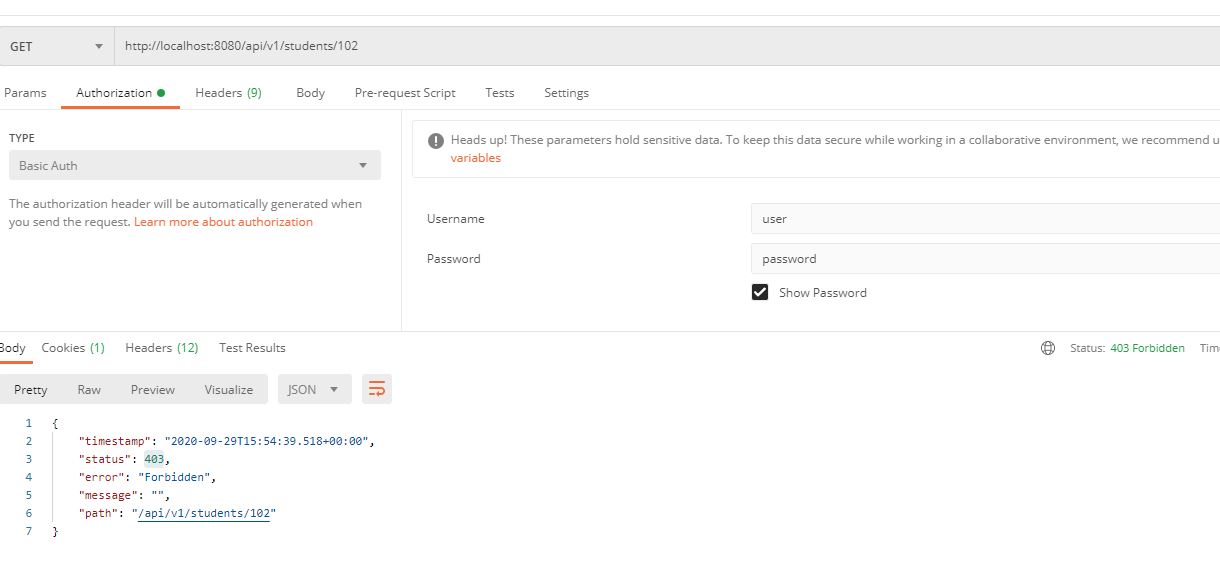
ApplicationSecurityConfig.java
@Configuration
@EnableWebSecurity
public class ApplicationSecurityConfig extends WebSecurityConfigurerAdapter {
.
.
@Override
@Bean
protected UserDetailsService userDetailsService() {
UserDetails adminUsrBuilder = User.builder()
.username("admin")
.password(this.passwordEncoder.encode("password"))
.roles("ADMIN")
.build();
UserDetails regularUsrBuilder = User.builder()
.username("user")
.password(this.passwordEncoder.encode("password"))
.roles("USER")
.build();
return new InMemoryUserDetailsManager(adminUsrBuilder, regularUsrBuilder);
}
@Override
protected void configure(HttpSecurity httpSecurity) throws Exception{
httpSecurity.csrf().disable()
.authorizeRequests()
//Whitelisting URLS
.antMatchers("/", "index", "/css/*", "/js/*").permitAll()
.antMatchers(HttpMethod.GET,"/api/**").permitAll()
.antMatchers(HttpMethod.DELETE,"/api/**").hasRole("ADMIN")
.antMatchers(HttpMethod.PUT,"/api/**").hasRole("ADMIN")
.antMatchers(HttpMethod.POST,"/api/**").hasRole("ADMIN")
.anyRequest()
.authenticated()
.and()
.httpBasic();
}
}
- In the above piece of code we have defined two roles ADMIN and USER
- Those with USER role can access the API with HTTP Get Method. That means both ADMIN and USER role could access all the API using GET method
.
.antMatchers(HttpMethod.GET,"/api/**").permitAll()
.
-
Those with ADMIN role can access the API with HTTP POST, DELETE and PUT Method which corresponds to Create, Delete and Update as per Open API Specifiaction.
.
.antMatchers(HttpMethod.DELETE,"/api/**").hasRole("ADMIN")
.antMatchers(HttpMethod.PUT,"/api/**").hasRole("ADMIN")
.antMatchers(HttpMethod.POST,"/api/**").hasRole("ADMIN")
.
- The above could be cross checked by changing postman call with HttpMethods and Credentials
StudentsService.java
@RestController
@RequestMapping("/api/v1/students")
public class StudentsService {
@Autowired
StudentRepo studentRepo;
@GetMapping(path="{studentId}")
public Student getStudentById(@PathVariable("studentId") String studentId){
return studentRepo.getStudentById(studentId);
}
@GetMapping
public List<Student> getStudentList(){
return studentRepo.getStudentsList();
}
@PutMapping
public String updateStudent(@RequestBody Student student){
return studentRepo.updateStudent(student);
}
@PostMapping
public String addStudent(@RequestBody Student student){
if(studentRepo.addStudents(student))
return "Student with Id " + student.getStudentId() + " added successfully";
else
return "Error:Unable to create Student";
}
@DeleteMapping(path="{studentId}")
public String deleteStudent(@PathVariable("studentId") String studentId){
studentRepo.deleteStudent(studentId);
return "Student Deleted Successfully";
}
}
- In the below code instead of using ROLES to authorize users to do something we use AUTHORITIES to allow user
- There are two ways to do this. One is by using hasAuthority in configure(HttpSecurity httpSecurity) method as below
-
.
@EnableGlobalMethodSecurity(prePostEnabled = true)
.
.antMatchers(HttpMethod.POST,"/api/v1/students/").hasAuthority("WRITE")
.antMatchers(HttpMethod.DELETE,"/api/v1/students/**").hasAuthority("WRITE")
.antMatchers(HttpMethod.PUT,"/api/v1/students/").hasAuthority("WRITE")
.
- Other is by using @preauthorize annotation to decide the methods
which could be allowed access to
.
.
@PreAuthorize("hasAuthority('READ')")
public List getStudentList(){
.
@PreAuthorize("hasAuthority('WRITE')")
public String updateStudent(@RequestBody Student student){
.
.
ApplicationSecurityConfig.java
Using hasAuthority
@Configuration
@EnableWebSecurity
public class ApplicationSecurityConfig extends WebSecurityConfigurerAdapter {
@Autowired
private PasswordEncoder passwordEncoder;
@Autowired
public ApplicationSecurityConfig(PasswordEncoder passwordEncoder) {
this.passwordEncoder = passwordEncoder;
}
@Override
@Bean
protected UserDetailsService userDetailsService() {
GrantedAuthority[] arrGrantedAuthAdmin = {new SimpleGrantedAuthority("READ"), new SimpleGrantedAuthority("WRITE")};
GrantedAuthority[] arrGrantedAuthUser = {new SimpleGrantedAuthority("READ")};
UserDetails adminUsrBuilder = User.builder()
.username("admin")
.password(this.passwordEncoder.encode("password"))
.authorities("READ", "WRITE")
.build();
UserDetails regularUsrBuilder = User.builder()
.username("user")
.password(this.passwordEncoder.encode("password"))
.authorities("READ")
.build();
return new InMemoryUserDetailsManager(adminUsrBuilder, regularUsrBuilder);
}
@Override
protected void configure(HttpSecurity httpSecurity) throws Exception{
httpSecurity.csrf().disable()
.authorizeRequests()
.antMatchers("/", "index", "/css/*", "/js/*").permitAll()
.antMatchers(HttpMethod.POST,"/api/v1/students/").hasAuthority("WRITE")
.antMatchers(HttpMethod.DELETE,"/api/v1/students/**").hasAuthority("WRITE")
.antMatchers(HttpMethod.PUT,"/api/v1/students/").hasAuthority("WRITE")
.anyRequest()
.authenticated()
.and()
.httpBasic();
}
}
ApplicationSecurityConfig.java
Using @PreAuthorize and EnableGlobalMethodSecurity
@Configuration
@EnableWebSecurity
@EnableGlobalMethodSecurity(prePostEnabled = true)
public class ApplicationSecurityConfig extends WebSecurityConfigurerAdapter {
@Autowired
private PasswordEncoder passwordEncoder;
@Autowired
public ApplicationSecurityConfig(PasswordEncoder passwordEncoder) {
this.passwordEncoder = passwordEncoder;
}
@Override
@Bean
protected UserDetailsService userDetailsService() {
GrantedAuthority[] arrGrantedAuthAdmin = {new SimpleGrantedAuthority("READ"), new SimpleGrantedAuthority("WRITE")};
GrantedAuthority[] arrGrantedAuthUser = {new SimpleGrantedAuthority("READ")};
UserDetails adminUsrBuilder = User.builder()
.username("admin")
.password(this.passwordEncoder.encode("password"))
.authorities("READ", "WRITE")
.build();
UserDetails regularUsrBuilder = User.builder()
.username("user")
.password(this.passwordEncoder.encode("password"))
.authorities("READ")
.build();
return new InMemoryUserDetailsManager(adminUsrBuilder, regularUsrBuilder);
}
@Override
protected void configure(HttpSecurity httpSecurity) throws Exception{
httpSecurity.csrf().disable()
.authorizeRequests()
.antMatchers("/", "index", "/css/*", "/js/*").permitAll()
.anyRequest()
.authenticated()
.and()
.httpBasic();
}
}
StudentsService.java
@RestController
@RequestMapping("/api/v1/students")
public class StudentsService {
@Autowired
StudentRepo studentRepo;
@GetMapping(path="{studentId}")
public Student getStudentById(@PathVariable("studentId") String studentId){
return studentRepo.getStudentById(studentId);
}
@GetMapping
@PreAuthorize("hasAuthority('READ')")
public List<Student> getStudentList(){
return studentRepo.getStudentsList();
}
@PutMapping
@PreAuthorize("hasAuthority('WRITE')")
public String updateStudent(@RequestBody Student student){
return studentRepo.updateStudent(student);
}
@PostMapping
@PreAuthorize("hasAuthority('WRITE')")
public String addStudent(@RequestBody Student student){
if(studentRepo.addStudents(student))
return "Student with Id " + student.getStudentId() + " added successfully";
else
return "Error:Unable to create Student";
}
@DeleteMapping(path="{studentId}")
@PreAuthorize("hasAuthority('WRITE')")
public String deleteStudent(@PathVariable("studentId") String studentId){
studentRepo.deleteStudent(studentId);
return "Student Deleted Successfully";
}
}
